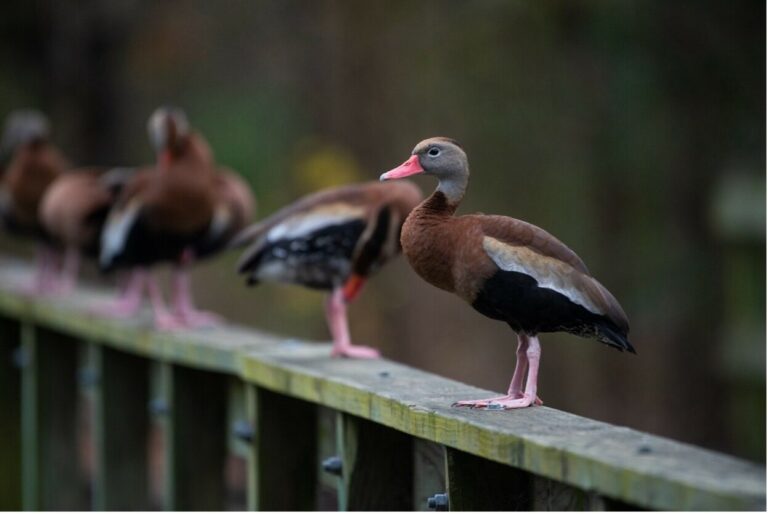What’s the wildest thing about the animals in the San Antonio River Basin?
Well, they’re wildlife!
Wildlife is a term referring to animals (or plants) that are neither domesticated nor farmed, live in their native habitats, and are integrated within an ecosystem. Examples in our river basin include bobcats, javelinas, snakes, river otters and armadillos, to name a few.
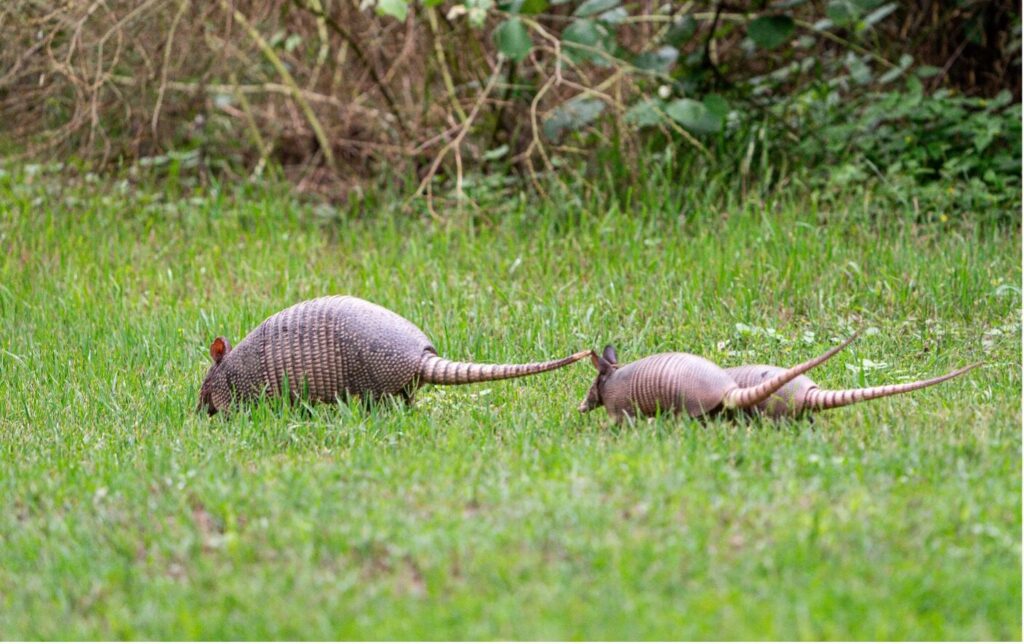
Armadillos are some of the iconic wildlife you will spot in our river basin! Photo Credit: DeVon Price—River Clicks Photo Contest.
In contrast to wildlife, our pet cats and dogs have been domesticated and bred over many generations for certain traits. Along the way, they’ve lost some of their instincts from earlier ‘wild’ ancestors. While many of them may be scrappy outdoors, pets are not a natural part of the environment and generally need humans to ensure their health and safety.

Please leash your pets to keep wildlife safe in public parks! Photo Credit: Mi Nguyen—River Clicks Photo Contest.
Wild animals, however, are generally safer and healthier without human interactions. Their survival, their health, and their role in food webs and ecological processes require specific needs to be met. Let’s look at some of the common ways that we might encounter these animals in our own communities and how we can instead help them while keeping them wild!
Please Don’t Feed Wildlife!
Many of us have made fond memories of feeding ducks at a nearby pond. However, many people use bread, which is not a natural food source for wildlife and can actually lead to unsafe and unhealthy conditions for the ducks and animals that eat it. When ducks consume ingredients and byproducts that they’re not able to digest or get the right nutrients from it can lead to potential malnutrition or disease. Similarly, we don’t feed our dogs grapes or chocolate because their bodies can’t digest them properly—these foods can make them seriously ill or even be fatal.
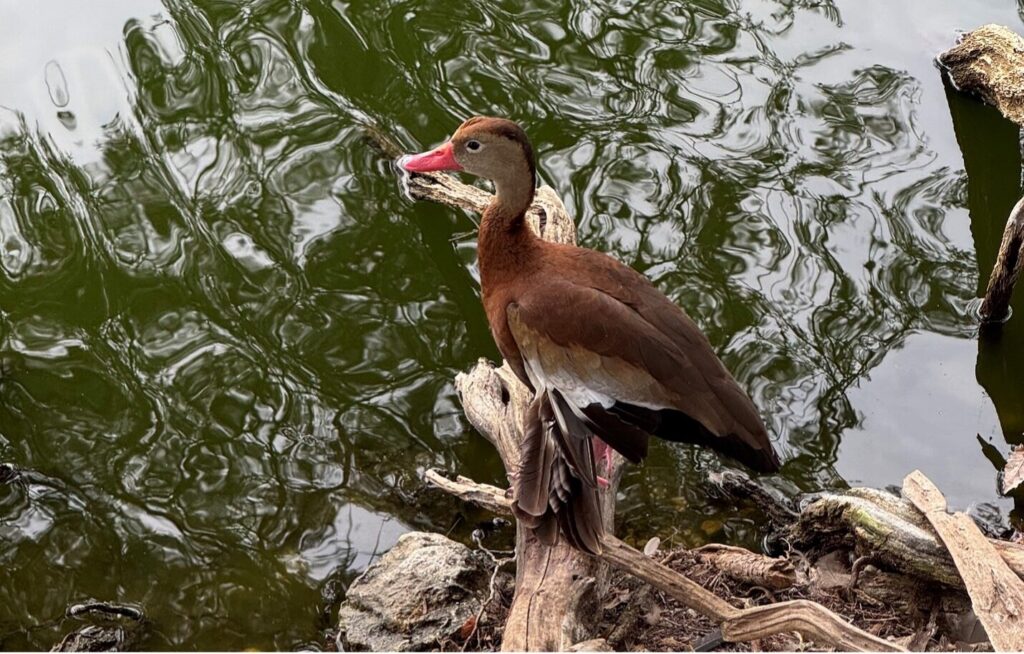
Feeding ducks and other waterfowl bread can cause them to become malnourished and potentially develop “angel wing” syndrome like this Black-bellied Whistling Duck near Woodlawn Lake. Waterfowl that develop this deformity lose their ability to fly. Photo Credit: Lee Marlowe, River Authority Ecologist
If you’re eager to feed ducks, stick to natural options like lettuce, corn, birdseed, peas, tomatoes, or non-citrus fruits. Animals that rely on their hunting, foraging, and survival instincts—rather than depending on humans—are more resilient and safer with populations that are healthier and more balanced!
Leave Space for Wildlife
Another easy way is to simply leave wild animals alone! Keeping pets inside or on a leash outdoors helps wildlife tremendously, as does refraining from feeding stray cats. Unleashed dogs can cause stress to wildlife and drive them from natural and urban areas, as they are unnatural predators in most ecosystems. Cats are even more harmful! Many feral and house cats still tap into some of their hunting instincts and will hunt even if they have cat food nearby. Outdoor cats are so dangerous to wildlife that they have been the cause of the extinction of at least 63 species of animals, earning them the title of the worst invasive killer of species in the world. How can you help? Keep your cats indoors to protect vulnerable and threatened species of birds, reptiles, amphibians and more.
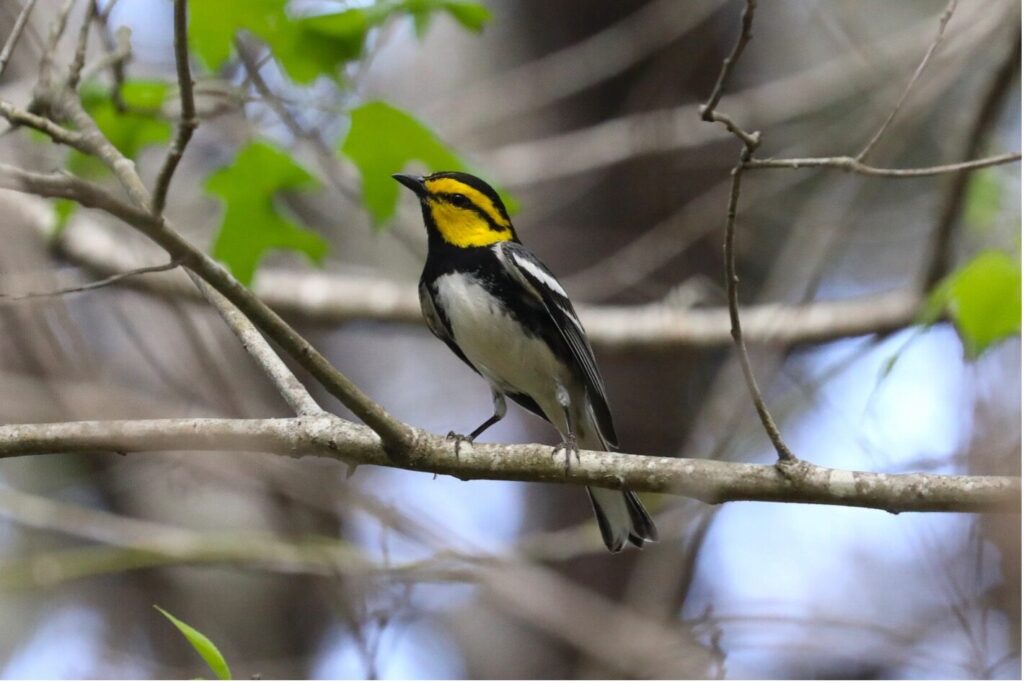
Outdoor cats can kill vulnerable species, like the endangered Golden-cheeked Warbler that breeds only in the Texas Hill Country. Photo Credit: Brooke Ross—River Clicks Photo Contest
If you encounter a wild animal, it’s best to admire from a distance and not entice it closer. Most wild animals have an inherent fear of humans. If an animal is approaching you, this could be due to illness, and it’s best to attempt scaring it away to keep you both safe.
Make Space for Wildlife
The most effective way to protect wildlife in the San Antonio River Basin is to remember that this is their home and, ultimately, they need natural spaces where they can find food, water, and shelter.

A Texas Spiny Lizard’s (Sceloporus olivaceus) camouflage helps it evade predators. Photo Credit: Just Blending In by Danielle Wildason—River Clicks Photo Contest.
Natural food, like birdseed, can sometimes be offered, but should only be supplemental to natural food sources which provide a healthier, more diverse diet. Our animals help to distribute native plant seeds when they eat them! Instead, we can plant native gardens and pocket prairies so wildlife like birds and reptiles can forage naturally for protein-rich worms, grubs, and caterpillars and help to cycle nutrients in the environment. Providing water in your backyard habitats can go a long way as development encroaches and decreases natural water sources like springs and wetlands.
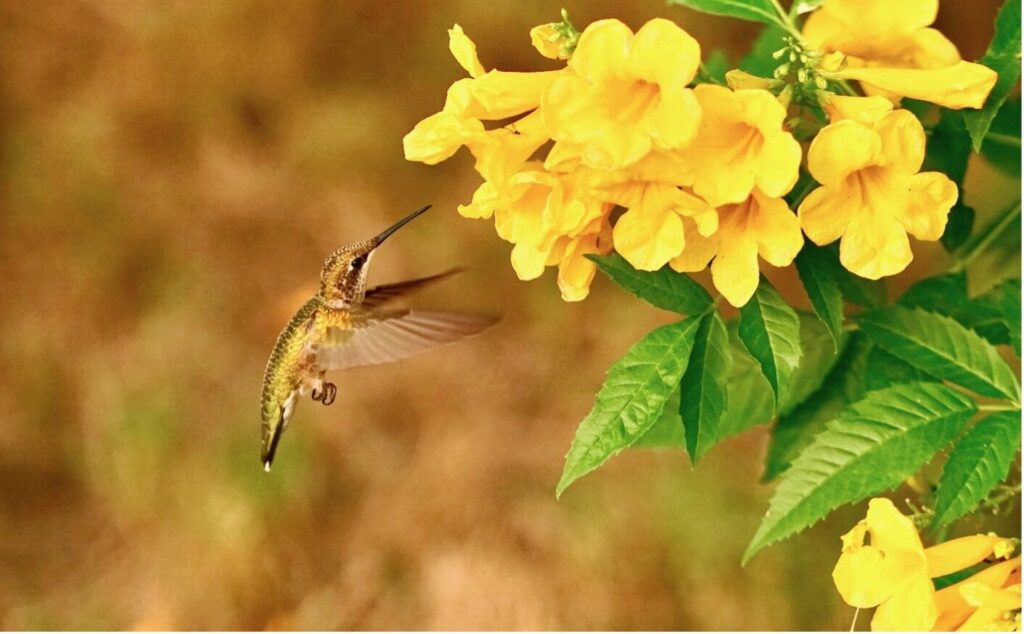
Use nature’s bounty—like this drought-tolerant Esperanza/Yellow Bells—to feed your backyard bird friends! Photo Credit: Richard Baltazar – River Clicks Photo Contest.
At the heart of it all, protecting the diverse species that call our San Antonio River Basin home starts with respectful coexistence. From resisting the urge to feed or handle wild animals to creating safe, natural spaces for them to thrive, every small action makes a difference. Remember—wild animals like foxes, lizards, opossums, and bats aren’t just visitors to our neighborhoods; they are essential members of the ecosystem. So, let’s do our part to ensure their survival and wellbeing. Keeping wildlife wild isn’t just good for the animals, it’s vital for the health of our entire watershed—humans included!


